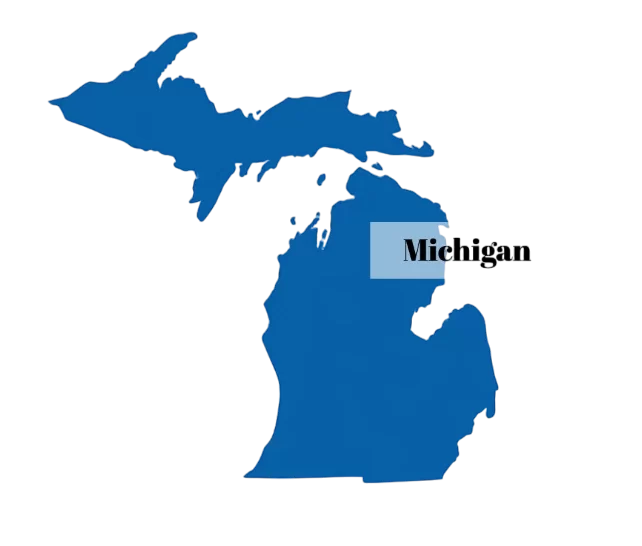The Medicaid Home Care Maze: A Complete Guide As the population ages & the need for home care services rises, it is critical to comprehend how Medicaid can assist in defraying these expenses. It can be very difficult for many families to navigate the intricacies of home care and Medicaid.
In order to give you the knowledge you need to get the best care for your loved ones, this guide attempts to simplify the process into doable steps.
Medicaid is a federal and state program created to give people with low incomes and resources access to health insurance.
Key Takeaways
- Medicaid provides home care services for eligible individuals who need assistance with daily activities
- Eligibility for Medicaid home care is based on income, assets, and medical need
- Necessary documentation for Medicaid application includes proof of income, assets, and medical condition
- Research Medicaid home care options to find the best provider for your needs
- Contact the Medicaid office for assistance with the application process and to inquire about available home care services
It is essential for paying for home care and other long-term care services for qualified people. Home care encompasses a variety of services that enable people to get help in their own homes instead of in a hospital or assisted living facility. These services may consist of companionship, personal care, and professional nursing care. Medicaid’s adaptability to its beneficiaries’ needs is what makes it so wonderful.
Some people might only need a few hours of help per week, but others might require 24-hour care. Families looking to support their loved ones must comprehend how Medicaid fits into the home care scene. It’s crucial to remember that Medicaid is a state-specific program with unique eligibility and coverage requirements. It is crucial to ascertain your eligibility for Medicaid or that of your loved one before beginning the application process. In general, applicants must meet certain income and asset limits, though eligibility requirements can differ greatly from state to state. The income limit is set at 138% of the federal poverty level in many states, though this can vary depending on age and household size.
A crucial element of eligibility, in addition to income, is asset limits. The majority of states do not bar applicants from receiving benefits if they possess a specific quantity of assets, like a house or car. Knowing what constitutes an asset & what does not, however, is essential.
| Step | Description |
|---|---|
| 1 | Gather necessary documents such as proof of identity, income, and residency. |
| 2 | Contact the local Medicaid office to request an application or apply online. |
| 3 | Complete the application form with accurate information and submit it along with the required documents. |
| 4 | Wait for the application to be processed and for a decision to be made. |
| 5 | If approved, enroll in a Medicaid home care program and begin receiving services. |
For example, while savings accounts might not be included in asset calculations, primary residences are frequently. Obtaining the required paperwork to back up your application comes next after you’ve proven your eligibility. Since it frequently calls for a number of documents proving assets and income, this process can be intimidating. Pay stubs, bank statements, tax returns, and evidence of any additional income sources are frequently needed paperwork.
You might also require medical records that attest to the necessity of home care services in addition to financial documentation. This could involve medical professionals’ evaluations or records of long-term illnesses that call for help. You can expedite the application process & prevent delays by having all of your documentation prepared and in order. Now that you have your paperwork together, it’s time to look into the different Medicaid home care options. Home care covers a variety of services under each state’s Medicaid program.
For people who would rather stay in their homes, some states provide programs like Home and Community-Based Services (HCBS), which offer a variety of support options. Investigating nearby home care providers is also essential at this point. Seek out organizations that are well-known in your community and hold a license. You can locate a provider who fits your needs by reading reviews and getting referrals from friends or medical experts.
Also, take into account if the organization provides specialized services that could be helpful for the particular condition of your loved one. It’s time to contact your local Medicaid office after gathering your documentation and learning about your options. This step is essential for getting precise information about the application procedure and any state-specific requirements. The Medicaid office staff is available to answer any questions you may have & offer advice on how to proceed with your application.
Prepare your questions & any pertinent details about your circumstances before calling the Medicaid office. Taking notes while you speak is also beneficial so you can review them later. Try to build a relationship with a caseworker who can help you at every stage of the procedure, if you can. Getting Medicaid benefits for home care can be more difficult when it comes to completing the application. Usually, the application asks for comprehensive details about your living arrangements, medical history, & financial status. When filling out this form, take your time because errors or omissions may result in delays or rejections.
A lot of states provide online applications, which can make things easier. Do not be afraid to ask friends or family for assistance if you require it or if you would rather apply on paper. For your records, it’s also a good idea to retain copies of all submissions. Now that you have finished the application, it is time to send in your supporting documentation. Make sure that every document that is needed is present and arranged properly.
Your application may be denied or processed slowly if certain documents are missing. You can submit documents electronically in some states, but you might have to mail them in others. To guarantee that your documents reach the Medicaid office safely, use certified mail or another trackable service if you’re mailing them. The waiting period starts as soon as your application and any supporting documentation are submitted. Depending on the state & specific circumstances, Medicaid processing times can differ significantly.
It’s crucial to maintain your composure while being proactive during this time. Think about getting in touch with the Medicaid office again to inquire about the status of your application if you haven’t heard back within a reasonable amount of time, usually 30 days. By keeping the lines of communication open, you can make sure that any problems are resolved quickly. Now that Medicaid has approved you, it’s time to choose a home care provider who can meet your needs. This choice is crucial because it will have a direct effect on the standard of care your loved one receives. Ask prospective providers about their background, education, and services during your interview.
Think about things like availability, suitability for your loved one’s requirements, and whether or not they have prior experience with particular illnesses or disabilities. During this process, follow your gut; a caregiver who has a good rapport with your loved one can have a significant impact on their general health. Working together to create a customized care plan is crucial after selecting a home care provider. According to the requirements and preferences of your loved one, this plan should include precise goals and objectives.
It should also specify what kinds of services are needed, such as companionship, medication management, or help with personal care. The care plan will continue to be applicable as needs evolve with regular reviews and updates. A successful care plan that enhances quality of life requires open communication between family members, caregivers, and medical professionals. Lastly, it’s critical to comprehend which services are covered by Medicaid home care benefits. While state-specific coverage may differ, personal care services like dressing, bathing, meal preparation, & medication management are typically covered.
Therapy sessions or skilled nursing services may also be covered in some states. You can make better decisions regarding the care of your loved one if you know what is and isn’t covered. If you feel that certain services are required but Medicaid does not cover them, talk to your caseworker or home care provider about possible alternatives. In conclusion, navigating the Medicaid home care system can be challenging and even overwhelming at times.
However, by being aware of every step of the process, families can gain the ability to get their loved ones the best care possible. Every stage, from identifying eligibility to selecting a provider and developing a customized care plan, is essential to guaranteeing high-quality assistance. Consider Rockaway Home Care if you’re searching for kind home care services in New York.
Rockaway Home Care has more than 20 years of experience providing high-quality, individually-tailored home care solutions, and it is committed to giving families outstanding support during this journey. Their skilled staff is dedicated to making sure each client gets the considerate treatment they are entitled to in the convenience of their own homes.
FAQs
What is Medicaid?
Medicaid is a joint federal and state program that provides health coverage to low-income individuals, including children, pregnant women, elderly adults, and people with disabilities.
What is home care under Medicaid?
Home care under Medicaid refers to a range of services provided to individuals who require assistance with activities of daily living, such as bathing, dressing, and meal preparation, in their own homes.
Who is eligible for Medicaid home care?
Eligibility for Medicaid home care varies by state, but generally includes individuals who meet income and asset requirements and require a certain level of care as determined by a healthcare professional.
How can I apply for Medicaid home care?
To apply for Medicaid home care, you can contact your state’s Medicaid office or visit their website to find information on the application process. You may need to provide documentation of your income, assets, and medical needs.
What documents do I need to apply for Medicaid home care?
The specific documents required to apply for Medicaid home care vary by state, but commonly include proof of identity, income, residency, and medical need. You may also need to provide information about your assets and any insurance coverage.
What services are covered under Medicaid home care?
Services covered under Medicaid home care may include personal care assistance, skilled nursing care, therapy services, medical equipment and supplies, and home health aide services, among others.
Can I have Medicaid and Medicare at the same time for home care?
Yes, it is possible to be enrolled in both Medicaid and Medicare at the same time, which is known as dual eligibility. This can provide additional coverage and benefits for home care services.




